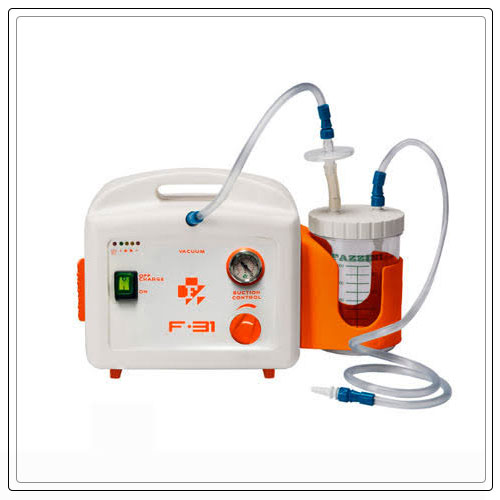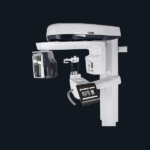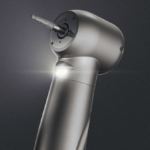
A hand held suction pump is one of the essential components in a medical health care facility.
A suction machine or an aspirator is a medical device that you can use to remove obstructions.
These include mucus, saliva, blood, and secretions.
Moreover, when an individual cannot clear secretions due to lack of consciousness or an ongoing medical procedure, hand held suction machines help them breathe.
In practice, a number of care professionals use these machines as an integral part of treatment plans.
Some of the common uses of hand held suction pump is to remove respiratory secretions when the patient is unable to do it themselves.
Assist a patient who is vomiting while seizing or unconscious, clear blood, and remove a foreign substance.
As you can also use them along with other medical technologies to treat various life-threatening conditions, these pumps are becoming a mainstream component in a hospital setting.
Keep on reading to learn more about hand held suction pumps.
Hand Held Suction Pump
The first conventional hand held suction pump was introduced by cardiologist Pierre Carl Edouard Potain in 1869.
It was a manual suction pump machine that uses a pump to drain abscesses and fluid buildup on the chest.
Moreover, the main goal of these devices was to prevent heart failure.

However, when electricity becomes common and reliable, suction devices transition from manual devices to electrically powered devices.
until the late 1970s, suction pumps were extremely large and were often permanently affixed to a wall.
Types of Hand Held Suction Pump
There are different types of hand held suction pumps.
Different types of these devices are available for use or rent by both hospitals and patients.
Let’s discuss them as follows:
Manual Suction Devices: These devices do not use electricity and their design can simply be as a hand held bulb.
You can use these devices to expel mucus from the nasal cavity of the child.
Moreover, you can often find them in emergency settings as they do not use electricity to function while are foot operated.
Also, they are small and portable.
However, you may find them difficult to use manual suction devices consistently and effectively over a long period of time.
Stationary Suction Machines: For years, these have been the most common machines.
This is because they are reliable, effective, and consistent.
However, due to lack of portability, many do not use them.

It is important to note that you cannot treat your patients during transport and they only provide emergency care within the premises of the hospital.
Portable Suction Machines: These suction machines are growing in popularity due to advances in respiratory and battery technology.
Moreover, these are lightweight and easy to move or transport, making them perfect for both patients and medical professionals.
Manual, stationary, and portable suction machines all have their place in a modern care environment and technical specifications.
Each one has its potential benefits, and you can use them for multiple types during different phases of the treatment.
Learn more about Medical Equipment Suppliers in Dubai here.
Common uses of a Hand Held Suction Pump
You can use Hand held suction pump when a patient is experiencing liquid or semi-solid blockages in a part of their body.
However, the ideal suction device can vary depending on the condition of your patients.
The following are a few conditions where you can use a hand held suction pump:
Ongoing Patient Care
Patients need a portable suction machine in their home if they are unable to clear their secretions for several reasons.
Moreover, this includes those who are receiving palliative care and find it difficult or impossible to clean their secretions.
Also, individuals with chronic illnesses like COPD, ALS, cystic fibrosis, bronchiectasis, etc, or patients who undergo tracheotomy or tracheal suction may need to use it.
Pre-Hospital
Portable respiratory are very common in a pre-hospital setting.
This is because they play a crucial role in helping emergency responders establish ABC, i.e. airway, breathing, and circulation.
Moreover, in practice, pre-hospital providers can use these suction pumps to treat different types of patients.
This includes:
- trauma victims with blood in the airway
- overdose victims with vomit in the airway
- other victims experiencing a respiratory emergency
In-Hospital
Most hospitals have rooms that are outfitted with stationary, wall-mount suction machines
Care teams also use stationary aspirators, as a part of standard procedures like tracheostomies, sinus-related ailments, and tonsillectomies.
However, in most cases, hospitals have a few portable devices for certain use cases.
Learn more about Infection Control and Prevention Guidelines here.
Working on a Hand Held Suction Pump
Suction matches generate negative pressure, which channels through a special type of plastic connecting: A single-9se catheter.
This negative pressure creates a vacuum effect that pulls any blood, mucus, or similar secretions.
You can then dispense these secretions into a collection jar.
In order to generate negative pressure, and remove secretions, these machines rely on a few key technologies.
These common components are:
Disposable or Rechargeable Batteries: These machines have powerful batteries.
It helps to make sure they provide suction capabilities when a reliable power source is not available.
Suction/Vacuum Pump: It is present inside the aspirator.
This is what causes negative pressure and is important for a functioning suction machine.
Connecting Tube: This tube connects the vacuum pump to the collection canister.
It should, however, never tough the contents within the collection canister.

Sterile Patient Tubing: Patient tubing attaches to the suctioning tip and carries that secretion of the patients into the collection canister.
Moreover, you should make sure to properly dispose of it after each suctioning session.
Disposable Canister: The disposable canister holds the secretions of the patients and often provides overflow protection capabilities in case it suctions too much fluid.
Furthermore, this canister should be disposable to make sure all parts of the machine remain sterile.
Power Cord: These machines come with a power cord that can help charge the machine when you are close to a power outlet.
Filters: Ideally, a disposable canister should support the use of bacteria/filters to prevent contamination with the inner components.
You can use certain filters to protect against dust and dangerous gases that can even damage the machine.
Learn more about Sterilizer Machine here.
Factors to Consider when Buying a Pump
Some of the factors you should consider when buying a handheld suction pump are;
Battery Life
In most tactical emergent situations, you may need to suction a number of patients.
This means that there will be little or no time to recharge a unit with weak battery power.
Thus, it is important to select a unit with long battery life.
Moreover, a unit that charges more quickly offers more stability and flexibility, so make sure to ask about battery charging time, as well.
Compatibility
Hospitals and EMS providers often find themselves overrun by disposable attachments in every shape and size.

However, when it comes time to attach a canister or suction catheter to a unit, you may need to have every disposable collection except for the one you need.
Therefore, make sure to pick a unit that is compatible either with a wide range of disposables or with the ones you have in the most abundant supply.
Make sure to get rid of any disposables you will no longer need.
In order to reduce frustrations and expedite patient care, make sure to store disposables with the unit they fit.
Number of Units
If you are wondering about the number of units you will need in your setting, consider this.
Hospitals that deliver babies, have large ICUs, like trauma centers, or are present in sprawling metropolises, will need more units.
At a minimum, you should, however, aim to have in-wall suction in every room.
Power
The suction will be able to deliver suction of at least 300 mmHg, with a flow rate of 30 liters per minute.
Moreover, a number of suction units aim to hit this minimum threshold.
However, some begin to lose power as soon as the battery ages or the charge weak.
It is important, to get clear details about the suction you can expect when the battery is old or close to needing a new one.
Learn more about Compressor Machine here.
Other Factors to Consider
Some other factors you need to consider while buying a pump are:
Adjustability
While these pumps are life-saving, too much suction can be catastrophic.
The ideal suction unit is quickly and easily adjustable, and your team should be able to suction a neonate, an ailing senior, and a healthy adult.
Some other factors you should consider are:
Maintainance Time and Costs
Ideally, your suction pump should never break or need maintenance.
However, there are huge maintenance costs for suction machines.
Make sure to ask the company you are considering buying from how long you can expect the unit to last and how frequently it will need maintenance.
Moreover, ask about a testing kit.
You do not want to find out that a unit does not work while you are tending a patient.
Many companies and manufacturers offer testing kits.
Therefore, make sure to assess battery life and stability, as well as suction power, every time you turn on the unit.
Learn more about Forceps Delivery here.
Wrapping it Up
Whether you are working in a hospital setting or EMS setting, hand held suction pump is an important component. From preventing aspiration pneumonia to clearing the airway of a drowning victim, the right suction pump can be an integral part of your EMS toolkit.





Comments